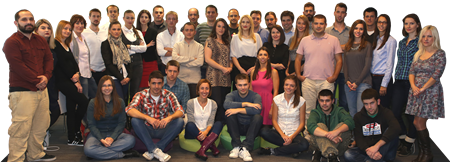Hookers, Rounders and Desk Clerks - Robert Prus
| Cena: |
| Želi ovaj predmet: | 1 |
| Stanje: | Polovan bez oštećenja |
| Garancija: | Ne |
| Isporuka: | Pošta CC paket (Pošta) Post Express |
| Plaćanje: | Tekući račun (pre slanja) |
| Grad: |
Novi Sad, Novi Sad |
ISBN: Ostalo
Godina izdanja: 1980
Jezik: Engleski
Autor: Strani
U dobrom stanju
Hookers, Rounders, & Desk Clerks: The Social Organization of the Hotel Community
Robert C. Prus, Styllianos Irini
Publisher : Forkner Pub Corp (1980)
Language : English
Paperback : 279 pages
Having recently completed an ethnomethodological study of hookers, strippers, and a variety of other sex merchants in the `hotel` and `bar` settings, I feel that Prus and Irini have done their work well. Their findings are insightful and make much sense in terms of what I have observed. In drawing conclusions they never go beyond their data, which are reported openly through an extensive use of quotations from interviews. In short, I think they have made a significant contribution to the literature of social deviance, social organization, and sexual behavior. The book should be of interest not only to sociologists, but-in terms of what it reveals about deviant careers and patterns-to psychologists and social workers as well. -- Joseph Albini, Contemporary Sociology
From the Publisher
This text has proven to be extremely popular as a resource for a variety of undergraduate courses in sociology. The underside of the hotel community is revealed through systematic sociology rich in theoretical relevance and insight.
From the Author
Hookers, Rounders, and Desk Clerks (HR&DC) (Prus and Irini 1980) is a study of the social organization of the hotel community that I developed with Styllianoss Irini. It is a study of hookers, strippers, and other entertainers, of bartenders, waiters, waitresses, desk clerks, and other hotel staff, and a variety of hustlers and thieves as well as an extended assortment of patrons. It is these people who collectively constitute the hotel community through their involvements, activities, interchanges, identities, and relationships with one another and others whose lives intersect there. Attending to the “what and how” of ongoing community life, this study was organized around activities, the things these people do on the day-to-day, moment-to-moment basis.
Focusing on people’s activities as meaningful, purposive instances of human endeavor and interchange, we attempted to provide a thorough, highly detailed account of people’s lived experiences from the viewpoint of the participants and the ways that they entered into the flows of human group life as agents. Given the elements of disrespectability and illegality that permeated much of this life-world, we also were determined to do this in ways that were void of sensationalism, moralism, and remedialism.
First published in 1980, this study began in 1976, following an unexpected meeting between Styllianoss Irini and myself. Styllianoss was in the process of completing an undergraduate degree in sociology and had visited the University of Waterloo as one of the schools he was considering for graduate studies. Waterloo had only a few openings that year and Styllianoss was not admitted to our program. However, during this preliminary contact we had a chance to talk and, as things worked out, Styllianoss would contribute notably to the broader sociological venture. I could not possibly have anticipated it at the time, but this chance encounter also represented the beginning of another major education for me as a social scientist. Indeed, the study of the hotel community would become an exceptionally enabling reference point and provide a set of resources that would help inform virtually all of the work I subsequently have developed as an academic (see Kleinknecht 2007). At the time Styllianoss and I met, I was completing an ethnographic study of card and dice hustling (Road Hustler, Prus and Sharper 1977) and, as we talked, I learned that Styllianoss was working as a desk clerk in a hotel that served as a “home base” for people involved in a considerable variety of disreputable and illegal activities (e.g. prostitution, exotic dancing, and theft). Having been focused on the thief subculture and people’s involvements, activities, and relationships therein through the work I had been doing with C. R. D. Sharper, I quickly became attentive to the social world that Styllianoss was describing. He said that for his undergraduate thesis he was trying to answer the question of whether there was a community in the hotel setting. “Of course there’s a community there,” I said, “but the more important question is, how does it work? How do all of these people fit their lives and activities together?” Looking back, I am a little surprised at the direct nature of my comment.
Still, from the work I had been doing with C. R. D. Sharper, I learned about the card and dice hustlers’ connections with the broader thief subculture and that bars and hotels represented an important set of contact points for many of these people. I also knew that deviance was to be understood as a social process rather than the product of people’s individual qualities or vague sociological notions of social structure. Still, the setting that Styllianoss was describing was much more than a single subculture of the type that characterizes most ethnographic research in sociology. The life-world that Styllianoss was discussing consisted of a set of subcultures embedded within a more extended community. It was a community within the community. Although I couldn’t fathom the fuller scope or the intricacies of people’s involvements therein at the time, it was in many respects a microcosm of the larger society. Our first contact lasted about an hour and, while I found Styllianoss’ situation and his experiences therein very interesting, I had no expectation of anything particularly consequential materializing. Nevertheless, Styllianoss seemed authentic in the things he had talked about and I suggested that he keep notes on the things he was observing. The idea was that he would keep a journal of the things he had observed and experienced while working as a desk clerk in the hotel setting, entering these each day on a tape recorder after he finished work. As I listened to the tapes and discussed these and related matters with Styllianoss, I became more intrigued with the interconnections of the people in the hotel setting in which he worked and their interlinkages with other hotels, bars, and places that he had mentioned. What struck me were the instances and details-the references to the arrangements people had been working out with one another and the overall fluidity of the hotel community-amidst a wide mix of people and the various relationships and interchanges that these people had with one another. Most research on crime and deviance focuses on one occupational category or one subcultural realm of activity, almost as if these categories or fields of endeavor existed unto themselves. As well, most research on crime and deviance focuses on some set of factors, variables, structures or forces that are presumed somehow to cause or produce certain outcomes (crime and deviance as dependent variables). Most of this research neglects people’s activities and fails to establish the linkages between these antecedent conditions and actual instances of crime and deviance (see Grills and Prus 2008). Road Hustler had taken me well beyond this, but as I reflected on the materials that Styllianoss had provided the importance of the community as an extended set of realms of activity was beginning to crystallize much more explicitly in my mind.
Much like C. R. D. Sharper in Road Hustler, Styllianoss was both my primary contact and research associate in the hotel setting. Styllianoss was a much less accomplished operator than was Sharper in their respective settings but the people in the hotel community generally liked Styllianoss and many of those he introduced to me seemed sufficiently comfortable with me that they quickly opened up more of their life-worlds to us. For my part, I tried to fit in as best I could and used all occasions to learn as much as possible about the situations at hand. I was not there to judge these people, educate them, reform them, or anything of that sort. Just to learn and understand. I kept notes on my experiences and the interchanges I had with these people. Initially, this was not intended as systematic research but instead was approached as part of my own education as a sociologist. Because university-related research has to be approved by an ethics committee, I approached ethics with a proposal to study the hotel community. Whereas much research is processed in more stereotypic terms, this proposal resulted in a hearing before the fuller committee. As I saw it, it was to be a study of activities and relationships but I didn’t know how the study would work out. The people assembled brought a variety of other standpoints to the hearing. Amongst other things, this was a study that not only might be defined as disreputable and dangerous, but also as unscientific and even entertaining. In addition to comments pertaining to the disrespectability (i.e. immorality) generally associated with a “deviant” subject matter as well as those who study deviance, especially in more sustained, close-up ways, there were questions of these sorts. “Do you carry a gun?” “What would you do if you found yourself in a violent confrontation?” “Why can’t you get these people to sign letters of permission (prior to being interviewed)?” “Couldn’t you just get a random sample of prostitutes to come to your office for interviews?” And, more humorously, “I was wondering if I might come along?” I tried to deal with people’s comments and answer their questions as patiently, openly and reasonably as I could and we did receive approval for the research project.
L_I_Č_N_O______P_R_E_U_Z_I_M_A_NJ_E_:
Za kupovine ukupne vrednosti preko 3.000 dinara moguće lično preuzimanje u Puškinovoj u Novom Sadu. Ako je za pojedinačnu knjigu navedena samo opcija Pošta, lično preuzimanje samo te knjige nije moguće. U Novom Sadu moguća je lična dostava i plaćanje preko službe Eko-kurir (cena je 250-350 din).
STANJE KNJIGE:
Knjiga koju dobijate je ona koja je na slici. Ukoliko nije naznačeno da je knjiga nova ili nekorišćena, ponekad se desi da na predlistu stoji potpis, posveta ili pečat i da to nije navedeno u opisu. Ako vam takve stvari smetaju, pitajte me pre kupovine da proverim.
KOMUNIKACIJA:
Komunikacija ide isključivo preko Kupindo poruka, ne telefonom. Budite normalni.
POPUSTI, CENKANJE I SL.:
Cena je ta koja piše, molim vas da mi ne šaljete pitanja o poslednjoj i zadnjoj ceni niti svoje kontraponude.
SLANJE:
Knjige šaljem kao tiskovinu ili CC paket nakon uplate na račun. Pakujem ih bezbedno i pažljivo, dobijate ih u stanju u kojem su poslate. Poštarina za jednu pošiljku obično iznosi od 190 do 260 din, u zavisnosti od težine. To je poštarina za tiskovinu, CC paket je skuplji, post ekspres je najskuplji. Za četiri i više pojedinačno kupljenih knjiga (u to ne spadaju kompleti) ja snosim troškove poštarine. Potrebno je da uplatite/preuzmete knjigu u propisanom roku od 7 dana.
SUSEDNE ZEMLJE I INOSTRANSTVO:
Poštarina je za jednu knjigu visoka i okvirno se kreće od 10-15 eur za prvu i oko 7 eura za svaku dodatnu knjigu. Postoji mogućnost znatno isplativijeg slanja za teže pakete. Uplate PayPalom (+10%), direktno na devizni račun, Western Union ili Moneygram. Najbolje je da pre kupovine pitate koliki su troškovi dostave, jer su često veći od cene same knjige.
INTERNATIONAL ORDERS:
I will send abroad. For your calculation, one hundred dinars roughly equals $1. Please register here:
https://www.limundo.com/Registracija/Kupindo
and then PM me on the link below for postage costs (they usually start at around 15 euro for the first book and 7 euro for each additional one)
https://www.kupindo.com/Clan/ndi/PostaviPitanje
MOJA PONUDA:
Nove knjige postavljam gotovo svaki dan. Možete ih pratiti na ovom linku http://www.limundo.com/Clan/ndi (pritisnite dugme `Prati`)
¤¤¤¤¤¤¤¤¤¤¤¤¤¤¤¤¤¤¤¤¤¤¤¤¤¤¤¤¤¤¤¤¤¤¤¤¤¤¤¤¤¤¤¤¤¤¤¤¤¤¤¤¤¤¤¤¤¤¤¤¤¤¤¤¤¤¤¤¤¤¤¤¤¤¤¤¤¤¤¤¤¤¤¤
Predmet: 79230393









